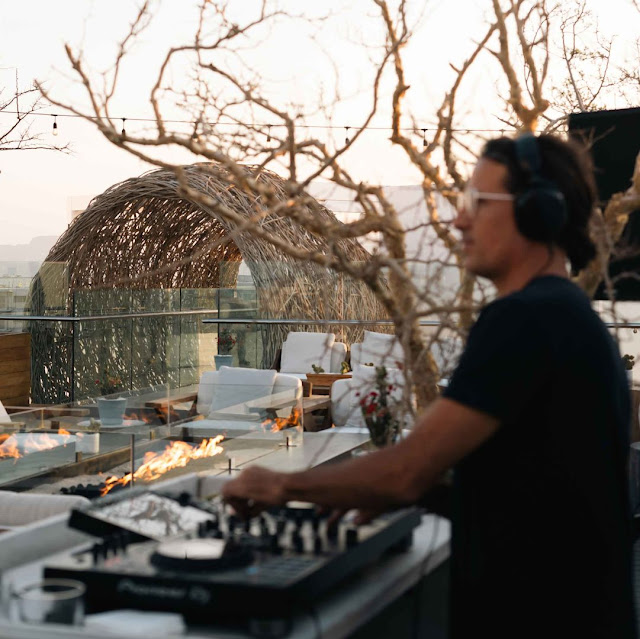It looked unreal at first—white geometric volumes floating on still water, caught between shifting light and sea. The caption mentioned that the architect had intended to create a space deliberately detached from reality—a place designed to feel like a dream.
That idea stayed with me. What does it mean to build something that feels imagined rather than inhabited? The question lingered, leading me to learn more about this unusual meeting of land and sea.
Located at the southern tip of Mexico’s Baja California Peninsula, Los Cabos is a region where arid landscapes and ocean horizons coexist—a tension that defines much of its scenery, even if not every shoreline bears their immediate trace. In San José del Cabo, the quieter of the twin towns that make up Los Cabos, Viceroy Los Cabos reveals itself not so much as a hotel, but as a spatial experience suspended between elements.
Designed by Mexican architect Miguel Ángel Aragonés, the resort is arranged as a series of minimalist white volumes rising from a vast, man-made reflecting pool. The layout is terraced, turning away from the town and opening fully toward the sea—an orientation that seems to invite contemplation rather than spectacle. Walkways cross the water, leading visitors through shifting reflections of sky, concrete, and light.
Some of the restaurants and pools are positioned just below the water’s surface, creating an uncanny sense of submersion. The architecture blurs solidity and liquidity, inviting movement yet insisting on stillness.
By day, the buildings absorb the desert sun, their white surfaces softening into the colors of the landscape. By night, the resort transforms under colored lighting—an intentional gesture that shifts the experience from serene minimalism to something more surreal, more performative. In either case, the space feels carefully tuned to emotional undercurrents rather than simply visual effect.
Inside, the guest rooms follow the same philosophy: minimal yet warm, finished in creamy marble and pale wood. Neon accent lighting and built-in surround sound systems allow guests to subtly alter the atmosphere, transforming the mood as easily as changing a song.
Recent updates include 65-inch smart TVs, Nespresso machines, automated blinds, and elevated amenities like Natura Bissé skincare—small but deliberate luxuries that echo the precision of the overall design.
In 2024, the property introduced Awacate, a new restaurant offering a modern interpretation of traditional Mexican flavors—from street-style tacos to elegant, family-style plates. Another standout is Nido, nestled within a woven nest-like structure that appears to hover above water. Its sculptural form offers both shelter and openness—a quiet sanctuary suspended in the middle of the lake.
These dining spaces complement the resort’s seasonal rhythm of social life: mixology experiences and live DJ sets at Cielomar Rooftop, and cocktail performances at Otro Bar. These events shift throughout the year, but the underlying atmosphere remains unchanged. Leisure here is not about spectacle, but about texture.
Beyond the resort’s edge, San José del Cabo offers its own invitation to linger. From October through June, the town hosts a weekly Art Walk on Thursday evenings. Galleries and workshops stay open late, offering complimentary drinks and small bites, while live music echoes through the historic plaza. It’s the kind of night where curiosity moves slowly, where art spills into the streets and blurs the line between exhibition and everyday life.
Though I haven't visited Viceroy Los Cabos in person, the more I explored its forms, textures, and intentions—from photographs to design notes—the more it felt like a place that resonates beyond location.
Some spaces don’t just ask to be visited. They ask to be imagined. To be held in the mind. Viceroy Los Cabos, for me, is one of those rare places: composed with precision, yet open to emotion—inviting not only the eye, but a sense of quiet longing. And perhaps that's enough to make you wonder what it might feel like to stand there, and to see it for yourself.
– Amangiri — monumental stillness in the Utah desert
– The Retreat at Blue Lagoon — minimalist architecture immersed in Iceland’s volcanic landscape
– Gagosian Gallery — a system where space becomes part of the art


.jpg)









Comments
Post a Comment